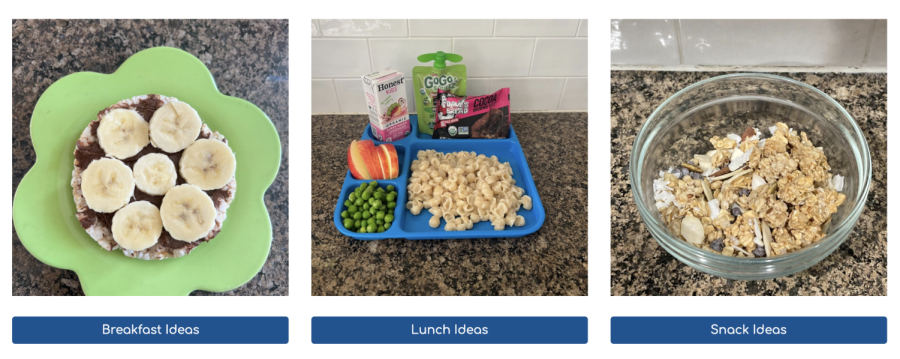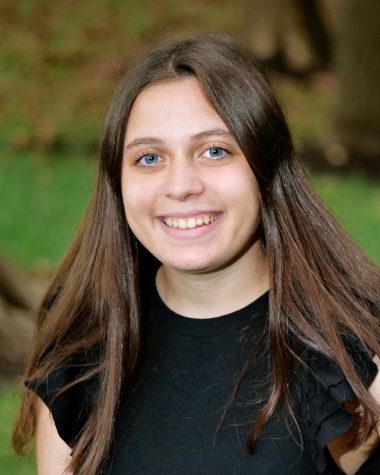Middle School students explore personal interests in Innovation Minimester
One part of seventh-grader Samantha Goldin’s food and nutrition project.
February 7, 2022
The Middle School Innovation Minimester took place from Jan. 18 through Jan. 28 with programming based on the goals of student-led learning and exploration of each student’s individual passions. The Innovation Minimester was also a break from the normal class schedule, with workshops and programming taking the place of class blocks.
The program focused on three components: focused individual learning, seminars and community building.
The key component of focused individual learning was designed with different tracks of focus such as humanities and Judaics, creative arts, STEM and more. After choosing their focus, students met with their track teams and track leaders to help them create individual projects of their choice centered around the topic of their track. With the support of their track leader, students went through the process of creating a research question, brainstorming their project and finally creating their final product.
Seventh-grader Samantha Goldin, who participated in the food and nutrition track, created a website titled “Kid In The Kitchen” with simple recipe ideas for breakfast, lunch and snacks. The website also features recommended food brands and a template for planning out a week of meals.
“I personally love food, and I love watching people make food, but a lot of the time, when they make it, it’s…something that a kid can’t really do themselves,” Goldin said. “I wanted to create a way so other people like me could find out easy ways to make lunches for themselves without having to use the oven or the stove.”
The second key component of the Innovation Minimester was the series of seminars held periodically throughout the program. Students had the option to choose between multiple sessions to hear from speakers both within and outside of the CESJDS community. Notable speakers included Shanna Sorrells who spoke about American Sign Language and deaf culture, and Frankie Perazzola and Claire Raymond who spoke about disabilities and social media.
The final aspect of the program was the community building portion, which gave students the chance to take a break from their projects in a more relaxed environment and spend time with friends.
“Acknowledging that part of the experience of creating also means that there’s moments of rest and relaxation so that we rejuvenate our brain,” Middle School Principal Dr. Eliana Lipsky said. “We included playing some games and hanging out with faculty in a much more relaxed way that’s a little more akin to what you might experience with camp.”
All three components were critical in order to achieve the goals of creating a space for experiential learning and emphasizing process over product.
“Sometimes we can get so caught up in getting the grade or getting everything to be perfect, when in reality, what we really want is for us to spend time on understanding the process, and creating a growth mindset around that, being okay with failing forward, taking risks and getting out of our comfort zone,” Lipsky said.
While these goals have remained similar throughout the past three years in which the program has been offered, the implementation has been modified. In 2020, when the program first ran, students had to balance attending regular classes in addition to working on two projects. Since then, the structure has been adapted so that students do not take classes for the two-week period, and they focus solely on one project.
This year, the middle school faculty had the added task of ensuring the Innovation Minimester programming would transfer smoothly to an in-person model after the last two Minimesters were held online. Middle School Experiential and Service Learning Chair Rachel Meytin highlighted the challenge of planning programming to cover the entire day for the entire two-week experience.
“[It was different] really having to take care of every minute of every day for every student,” Meytin said. “When we were online, you could say, ‘Now you have independent work,’ or, ‘now you have a break,’ and then you just don’t have anything for an hour. But really having to program from 8 a.m. to 4 p.m. for eight days straight through, it was a lot more.”
As a result of this dedication, both students and staff were able to enjoy a successful Innovation Minimester experience. “I really enjoyed the fact that we got to work with other people and speak and share ideas with other people… [unlike] sometimes how it is like during the normal school year,” Goldin said.
“During [Innovation] Minimester it was just really fun to be able to have that experience where we got to learn new things at seminars, and go with our friends all around school and work with each other on our projects.”








